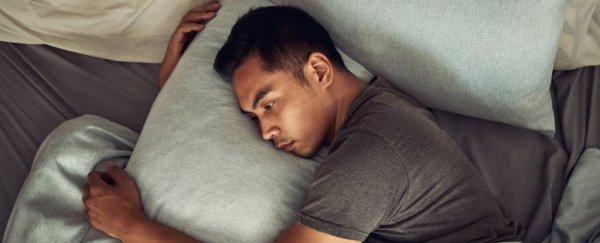A systematic review of sleep data from more than 100,000 people in the United Kingdom has revealed 16 distinct ways we snooze. The clusters could one day allow experts to better diagnose insomnia and preinsomnia in individuals.
The research is based on data from smart wristbands, used by the United Kingdom Biobank to determine our patterns of wakefulness and sleep. This was done by measuring the arm movements and twitches of participants over the course of several days.
The result of the long-term study was a 'real-world sleepscape' that showed quite the diversity of sleep cycle patterns.
Overall, the clusters are split into five broad categories (1 to 5). Those that fall in the first category generally experience insomnia with long sleep duration and 'midawake', which is when you wake up in the middle of the night.
On the other end of the spectrum, people who fall in category five sleep all the way through the night without taking naps in the day.
Clusters 2 to 4 are further split into a's and b's. 2a, for instance, is a cluster of those who show irregular sleep schedules, probably as an indication of shift work.
2b, meanwhile, is defined by the authors as "fragmented sleep with short sleep duration" overall.
3a is a cluster of those who experience insomnia with normal sleep duration, and 4a includes those who suffer from insomnia with short sleep duration.
 Clusters of sleep types identified by hierarchical analysis. (Katori et al., PNAS, 2022)
Clusters of sleep types identified by hierarchical analysis. (Katori et al., PNAS, 2022)
To make things more complicated, the clusters 3b and 4b are further split into eight subcategories of fragmented sleep.
3b-1 is a large cluster and includes those who sleep deeply but cannot fall asleep easily once they wake up. 3b-2 includes short-duration sleepers who show a mix of short wake-ups and some longer hours spent staring at the ceiling.
4b-1 is another large cluster and features long sleepers. 4b-2 houses all the morning people and 4b-6 houses all the night people.
4b-4 and 4b-5 is defined by the authors as 'preinsomnia'. Both clusters show normal wake-up durations in the middle of the night, but those in the former cluster wake and fall asleep repeatedly and frequently, which suggests they struggle to maintain sleep. Cluster 4b-5, meanwhile, shows less fragmented sleep as a whole.
4b-3 generally has a shorter 24 hour periodic sleep-wake cycle that gets out of sync with the usual circadian cycle depending on whether someone is working or on holiday. This is also known as 'social jet lag'.
 The outlier dataset divided into eight clusters. (Katori et al., PNAS, 2022)
The outlier dataset divided into eight clusters. (Katori et al., PNAS, 2022)
The clusters identified in the current research are complicated and diverse, and they weren't just put together for fun. They could very well prove clinically meaningful with future research.
Past studies, for instance, suggest that insomnia marked by short sleep duration is linked to impaired neurocognitive function, while insomnia marked by normal sleep duration is linked to an anxious-ruminative profile.
Data recorded from people moving their arms during sleep could not only help identify those with insomnia, it could also help reveal those most at risk of developing mental or physical health issues.
To get to that stage, however, we need a lot more research. While other forms of brain and muscle measurements during sleep are too short-term to identify the nuances of 'social jet lag' or 'morning/evening types', the clusters identified in this research still need to be verified further.
The authors hope the "systematic and unbiased clustering method" they've developed can one day be linked with other personal information, like present illness, past medical history, medications, education occupations and lifestyle habits to help us better understand the status of an individual's health.
The study was published in PNAS.
